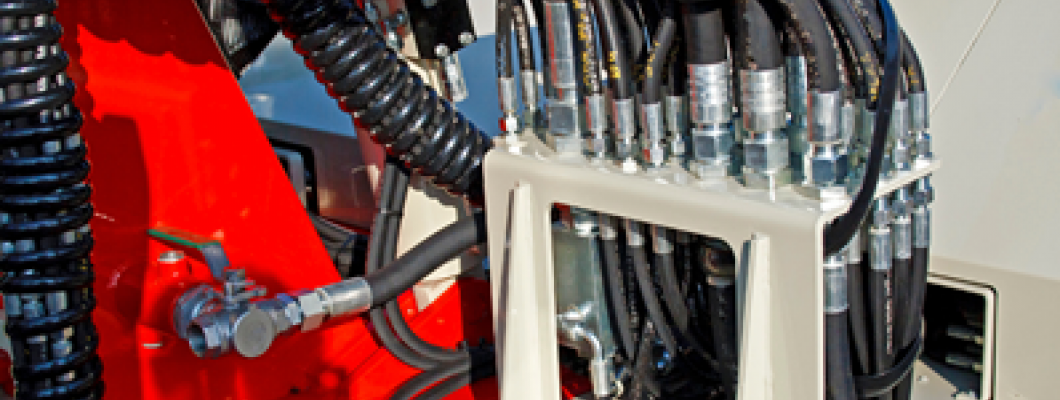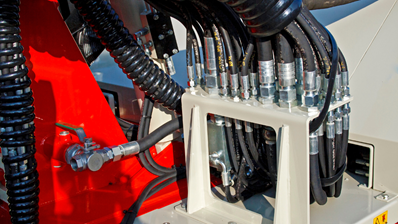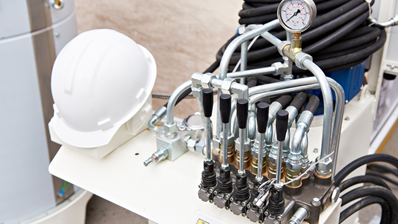
Az irányváltó szelepek a hidraulikus rendszerek alapvető alkotóelemei, amelyek a folyadékáramlás irányát szabályozzák. Ezek a szelepek határozzák meg az olaj vagy a hidraulikafolyadék útját a rendszeren belül. A szelep helyzetének manipulálásával a kezelő szabályozhatja az olajáramlás irányát, lehetővé téve annak különböző hidraulikus működtetőkhöz vagy alkatrészekhez történő irányítását.

Íme, hogyan befolyásolják az irányvezérlő szelepek az olajáramlást:
-
Az áramlás irányának szabályozása: Az irányvezérlő szelepek több porttal rendelkeznek, amelyek különböző hidraulikavezetékekhez csatlakoznak. Ezeket a csatlakozókat "P" (nyomás), "T" (tartály/visszavezetés), valamint "A" és "B" (működtetők) felirattal jelölik. A szelep különböző pozíciókkal vagy állapotokkal rendelkezik, amelyek meghatározzák, hogy mely portok vannak csatlakoztatva, és ennek megfelelően irányítják az olajáramlást. Például egy egyszerű kétállású szelepnél az olajáramlás a szelep helyzetétől függően az "A" vagy a "B" csatlakozóba irányítható.
-
A folyadék útjának szabályozása: Az irányvezérlő szelepek határozzák meg az olaj útját a hidraulikus rendszeren belül. Úgy konfigurálhatók, hogy az olaj egy irányba áramolhasson, teljesen elzárják az áramlást, vagy kapcsolatot biztosítanak bizonyos portok között. Különböző szeleptípusok, például tolószelepek, bütyökszelepek vagy forgószelepek használatával a kezelő elérheti az olajáramlás kívánt útját.
-
Szelepvezérlés: Az irányvezérlő szelepek döntő szerepet játszanak a hidraulikus működtetők, például a hengerek vagy motorok vezérlésében. Azáltal, hogy az olajáramlást a megfelelő működtető csatlakozóhoz irányítja, a szelep lehetővé teszi a működtető számára, hogy kitolja vagy behúzza, elforgassa vagy más szükséges mozgást végezzen. A kezelő a szelep helyzetének megváltoztatásával megfordíthatja a működtető mozgásának irányát, lehetővé téve a mechanikus eszközök pontos vezérlését.
-
Folyadéknyomás-szabályozás: Az irányvezérlő szelepek a hidraulikus rendszeren belüli folyadéknyomást is befolyásolhatják. A szelep kialakításától és konfigurációjától függően befolyásolhatják a nyomást az áramlási sebesség szabályozásával vagy az olaj bizonyos alkatrészekhez történő elvezetésével. A nyomáscsökkentő szelepek, amelyek gyakran az irányvezérlő szelepekbe vannak beépítve, segítenek a biztonságos nyomásszintek fenntartásában a felesleges olajnak a tartályba történő visszavezetésével.
Összességében az irányvezérlő szelepek felelősek az olaj áramlási irányának, útvonalának és nyomásának szabályozásáért a hidraulikus rendszerekben. Ezek biztosítják a kezelő számára a hidraulikus működtetők vezérlését, és lehetővé teszik a rendszer számára a kívánt funkciókat, például a gépek mozgatását, a terhek emelését vagy az ipari folyamatok vezérlését.

